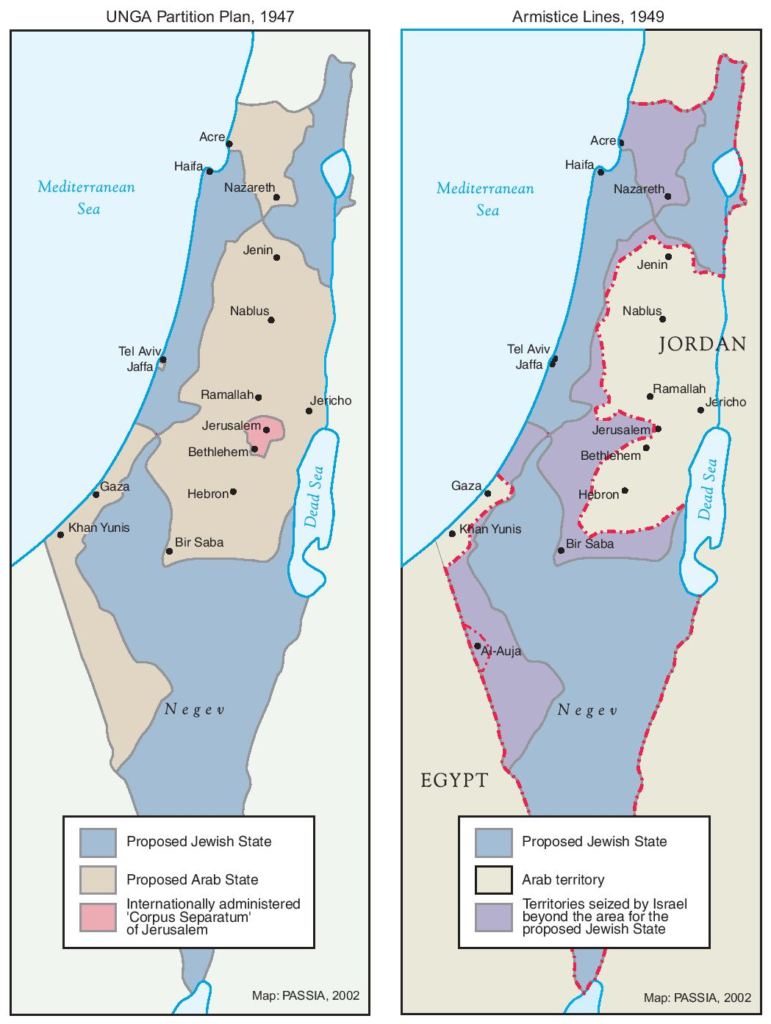Featured Image: A photo purporting to depict Arab refugees during the 1948 Arab-Israeli war.
You may have heard some screeching about the Nakba – literally translated as the catastrophe – from the terrorist simps in the media and politics of late. What you may not know is what it really was, the first time the Arabs FAFOed with the Israelis. Before we get into the specifics, a little background is in order: let’s start with what exactly is, or isn’t, Palestine.
I covered a lot of the history of Israel, Judea and Samaria here, and won’t get into a lot of the pre-Mandate history now; suffice to say, the region wasn’t called Palestine outside of a relatively short period under the Romans, until the Brits came along after WWI.
And just how did the British get control of those lands in 1920? They, and the French, decided they were going to take over for the Ottomans as early as 1916 with the signing of the Sykes-Picot treaty. After the war, the Turks were forced to sign the treaty of Sevres which stripped the Ottoman Empire of all of its holdings outside of Anatolia proper. The League of Nations then created Mandates for the Brits in ‘Palestine’ and Iraq, and for the French in Syria and Lebanon.
As an aside here, I blame a British woman, Gertrude Bell, for most of the sectarian violence in that area of the world. Her idea was that forcing disparate ethnic and religious groups in the Middle East would force them to drop their native identities in favor of a nationalistic viewpoint. She convinced the British to adopt this as policy while redrawing borders. Clearly it did not work.

Despite what you might hear or read elsewhere, the original Mandatory Palestine included all of what would become Transjordan, as well as the modern state of Israel. The Brits had been administering the region since the end of WWI and the collapse of the Ottoman empire. During the interwar period, the Brits faced several Arab uprisings and there were many attacks on Jewish settlements.
It was during this period that the Jewish population in the Mandate started a few defense organizations like the Haganah and Irgun. World War Two saw the formation of several British units manned and staffed by Mandate Jews as well as European Jews who had escaped Nazi persecution.
In the year or two after the war ended the Haganah and Irgun, being somewhat prescient, started smuggling in large quantities of small arms and ammunition. During this time, they also established several (covert) ammunition plants.

After WWII, Transjordan had achieved its independence from the British Mandate in 1946, with emir Abdullah named as king. In November of 1947 the United Nations formulated a partition plan for British Mandatory Palestine. This led to a civil war between the Jews and Arabs of the Mandate. To be sure, there were atrocities on both sides. The Arab Liberation Army regularly targeted civilians while the Israeli militia Lehi was accused of a massacre of Arab civilians at Deir Yassin.
On 15 May 1948 the British Mandate for the rest of Palestine was set to expire. Just 8 hours before the expiration, David Ben-Gurion the future PM, delivered the Israeli Declaration of Independence. The Arab states in the region refused to recognize the boundaries of the 1947 partition plan, thus leading to the 1948 Arab-Israeli war.
I should note: most of the lands set aside for the new state of Israel were largely uninhabited – if technically Arab-owned.
It was during the civil war and Arab-Israeli war that many Arabs were displaced from what would become the state of Israel. Estimates of the number of displaced Arabs range from 500,000 to 700,000, out of a total population of around 1.2 million Arabs in the region during the Mandate. Some 160,000 Arabs remained in Israel and became citizens of the new country.

The map above shows the difference between the proposed partition and the 1949 ceasefire lines. As you can see, the Arab League intervention backfired. Not only did they not prevent the establishment of the State of Israel, they lost 22% of the territory that would have become a Palestinian state. The rest was annexed by Jordan (the West Bank) and Egypt (Gaza) who both had designs on parts of the Mandate. This ‘intervention’ was directly responsible for much of the Arab displacement. This pattern would repeat itself in 1958, 1967 and 1973, with the Arabs attacking Israel and losing more land when they lost.
The Arab League – minus Jordan – decided they would not accept any refugees from Mandatory Palestine despite the fact that they were Arabs and Muslim. Jordan accepted a small number, around 25,000 refugees. The rest of the Arab League countries – Egypt, Syria, Lebanon and Iraq – wanted to use the refugees as leverage. The tactic has seemed to work, as Palestinians are the only people who can inherit refugee status.
Meanwhile, anti-semitic pogroms in the rest of the Arab and Muslim world displaced more than 1.2 million Jews. The largest single expulsion of Jews happened in Iraq: more than 120,000 Iraqi Jews escaped Iraq with the majority winding up in Israel.
Did the Nakba have to happen? In short, no. The nascent state of Israel had no plans to conquer more territory and would have been content to exist within the bounds of the UN Partition. Instead, they wound up fighting war for their very existence and winning.
Had the Arabs accepted the 1947 partition plan, the Nakba would still be used to describe the breakup of the Ottoman empire after WWI and there would be a country called Palestine.